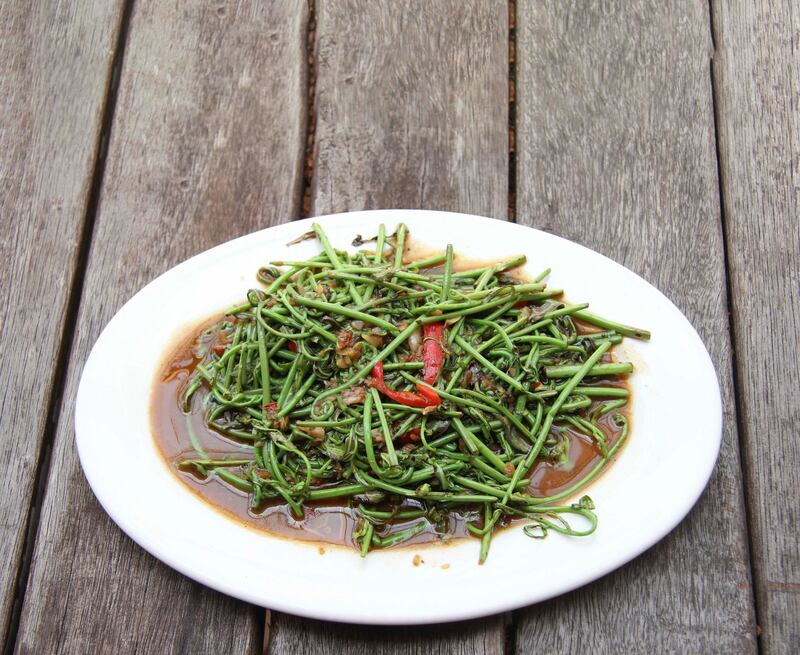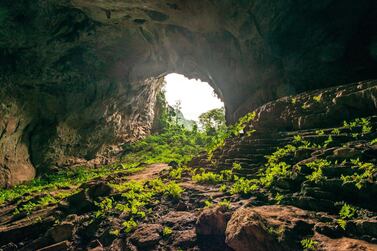Flying into the unspoilt colonial town of Kuching always marks the start of an exotic adventure. Known as Cat City, this is the easygoing capital of Sarawak, the Malaysian state that hugs the wild north-east coast of the island of Borneo, a mythical land of hornbills and former headhunter tribes, covered with a near impenetrable green blanket of the world's oldest rainforest.
Change in Kuching
Over the years, I have seen Kuching change from a sleepy backwater to one of Asia’s secret boltholes; fun and funky but still undiscovered by mass tourism. The legendary Anthony Bourdain loved the food here, declaring local favourite, sarawak laksa, to be “the food of the gods”, but even he would be surprised to discover the gastronomic revolution going on today. I have been told by Malaysian foodie friends that there is a quite remarkable renaissance of native jungle cuisine from Sarawak’s more than 40 indigenous tribes. Local restaurants are using weird and wonderful ingredients foraged in the rainforest that would surprise even chef Rene Redzepi of Copenhagen’s famed Noma, the modern father of back-to-nature cuisine.
I check in to the Marian Hotel, a grandiose 19th century half-timbered schoolhouse transformed into a hip boutique lodging house by style guru Rosemarie Wong, who promises to be my gourmet guide around her home town. "I have been working for several years with upcountry Iban people to promote and valourise the incredible handicrafts they produce in their traditional Longhouse communities," she explains. "And now locals and tourists in Kuching and the rest of Sarawak are suddenly discovering the incredible world of tribal cuisine, using products that are not just organic but grow wild in the jungle."
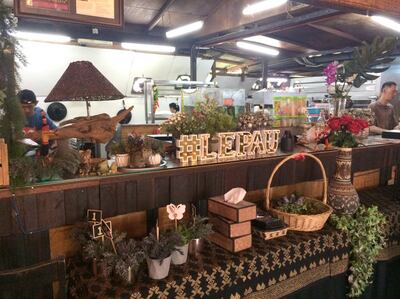
First stop is Kuching's temple to heritage ethnic cuisine, the rustic wood and bamboo Lepau Restaurant, whose delightful owner Roslyn, her daughter Marichelle or grandson Jimmy love nothing more than to explain the family's unique recipes and ingredients. Roslyn is from the Kayan people, but Lepau proposes a mouthwatering kaleidoscope of dishes from the Iban, Melanau, Kelabit and Bidayuh tribes, to name just a few. We start with the Melanau speciality, umai, a tangy raw seafood salad, where fish, shrimp or jellyfish are thinly sliced and marinated in calamansi lime juice with ground peanuts, chopped onions and chillies. It explodes in my mouth like the perfect combination of Mexican ceviche and Japanese sashimi.
Next is a hearty Iban soup, sup asam ikan, with terung dayak, a wild sour yellow aubergine, wood-smoked river fish, lemongrass and mild long red chillies. And then there is Lepau's signature dish, tempoyak udang, plump prawns and fried ikan bilis anchovies on a bed of creamy, fermented durian. People love or hate durian, known as the "king of fruits"; it is totally addictive yet banned in hotels for its overpowering odour. I am not the greatest fan of fresh durian, but this fermented version is something I can imagine not just Bourdain, but France's greatest chef, Alain Ducasse, absolutely raving about.
Throughout the meal at Lepau, I can’t help noticing tribesmen, heavily tattooed with traditional symbols, wandering into the kitchen carrying sacks of mysterious-looking vegetables.
Foraging the forests
Harvested from the forests around their remote villages, they contain cucumber flowers, tapioca and sweet potato leaves, juicy jungle mangoes and lethal petai, known as the "stinky bean" but utterly delicious. And it is difficult to resist vegetarian dishes such as midin belacan, crunchy jungle ferns stir-fried with fermented shrimp paste; cangkuk manis, star gooseberry leaves, fried with pumpkin and egg; or the rare forest shrub, jelaut, smothered with smoky garlic. This is a cuisine that shocks with the simplicity of the cooking and the directness of unknown flavours.
As we sit completely sated at the end of the feast, Rosalyn looks at us with a smile, saying: “We originally started Lepau to preserve the fading food traditions of our people, to revive ancient recipes, and today our modest ‘rice barn’ restaurant showcases to visitors from around the world the unique cuisine of the different tribes of Sarawak.”
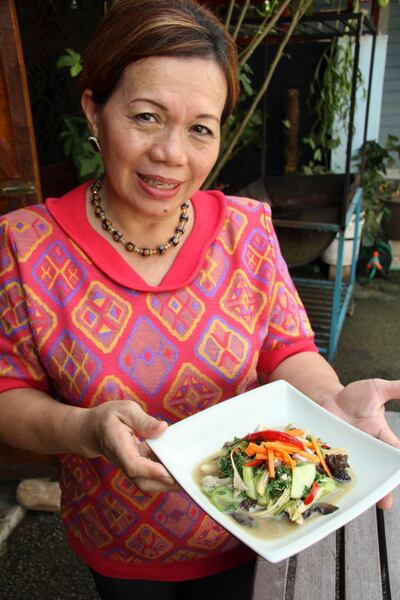
There are half-a-dozen other Kuching eateries specialising in jungle cuisine, including Tribal Stove and The Dayak, but Wong proposes a final surprise meal. After a sunset walk along the mighty Sarawak river, we jump in a tiny sampan that takes us across to the other bank for a sum of 1 Malaysian ringgit (Dh0.9), where we walk up to the rambling My Village Barok, a maze-like teak mansion. The owner of the restaurant, Haji Sofian Japar, is walking over after prayers from the local wooden mosque, traditionally dressed in an embroidered silk sarong and velvet songkok cap.
Halal tribal fare
“We are in one of Kuching’s Muslim Malay communities, but the cuisine in our restaurant still offers halal dishes from Sarawak’s native tribes,” he says.
From the barbecue, an irresistible aroma of grilling scallops, squid and mussels wafts over our table, but we have come here for the famous manok pansoh, tender chicken pieces squeezed inside a bamboo trunk, stuffed together with tapioca leaves, wild ginger flower, lemongrass and shallots, then slow-cooked over the flames of an open fire. Another plate of foraged jungle vegetables accompanies the chicken – curly paku stems fried with a pounded sambal chilli sauce.
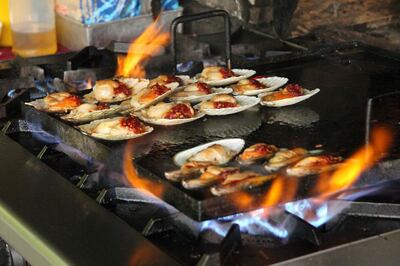
Going to source
Having developed the taste for jungle food, I now can’t resist the temptation to go further and really explore Sarawak’s ancient equatorial rainforest. Kuching is the perfect starting place to plan a trip into the jungle, with nearby trekking, white water rafting and longhouse stays easy to arrange.
I cannot miss the chance to go further and fly up to the Gunung Mulu National Park. With a small airport and few flights, this Unesco World Heritage Site remains remarkably unspoilt, with a limited number of travellers arriving each day. Visits to some of the world’s largest caves are only possible when accompanied by native guides.
You don’t have to be a super-fit speleologist to explore the four key Mulu caves that are open to the public, and looking around I see kids as young as 12 accompanying their parents, and seniors in their 70s. Equally, there is a cosmopolitan mix of budget backpackers staying in cheap and cheerful homestays, and more pampered tourists, myself included, booked into the Mulu Marriott, an affordable but undeniably luxurious resort with a turquoise swimming pool and plush villas surrounded by jungle.
My guide for my stay is Mack Mampang, an Iban tribesman who has been taking visitors around Mulu for ten years. At Park Headquarters, we head for a raised wooden plankwalk that leads us for four winding kilometres through dense tropical undergrowth, as far as the Deer and Lang caves.
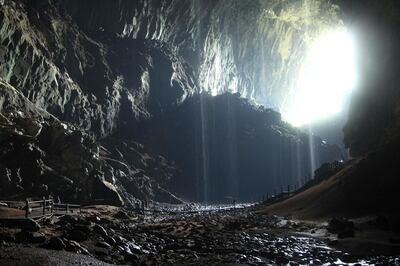
The long walk in sweltering heat and humidity is close to being my highlight in Mulu, as I feel I am finally at the source of all the jungle food I have been tasting in Kuching. Mampang is pointing out exotic orchids and pitcher plants, edible ferns, climbing figs and berries, as well as tree bark, fungus and liverworts used in tribal medicines.
A narrow slit-like opening of a jagged limestone cliff face and we are suddenly in the endless abyss that is the Deer Cave, the world’s largest subterranean passage, where you could fit five Wembley stadiums. Just nearby is Lang Cave. This has none of the otherworldliness of Deer, where you feel as if you could be exploring Mars, but rather the impression of walking through a petrified forest of giant stalactites and stalagmites.
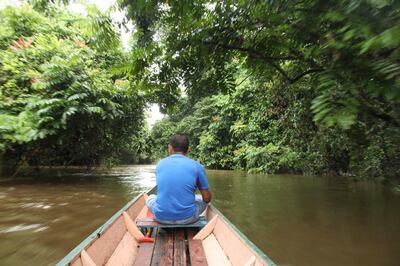
The next day, a motorised dugout canoe speeds us along the winding Melinau river, stopping off for a brief climb up to Wind Cave, before landing at the foot of the steepest staircase I have ever seen, rising up to the opening of Clearwater Cave, the jewel in Mulu's crown. About 500 steps later we enter the giant cave, and after even more up-and-down climbing, our route crosses a spectacular fast-flowing underground river. Down below, the river gushes out of the cliff to form a cool natural swimming pool, perfect for recovering from all these exertions, while Mampang unpacks a picnic lunch.
He lays out a spread of the same jungle products used in Kuching's native restaurants – midin and paku, rice steamed in fragrant pandan leaf, spicy pickles and salted fish, fresh cempedak fruit and dabai beans that could be tropical olives – but this time everything is home cooked by Mampang's wife. It's a fitting end to a memorable trip.
